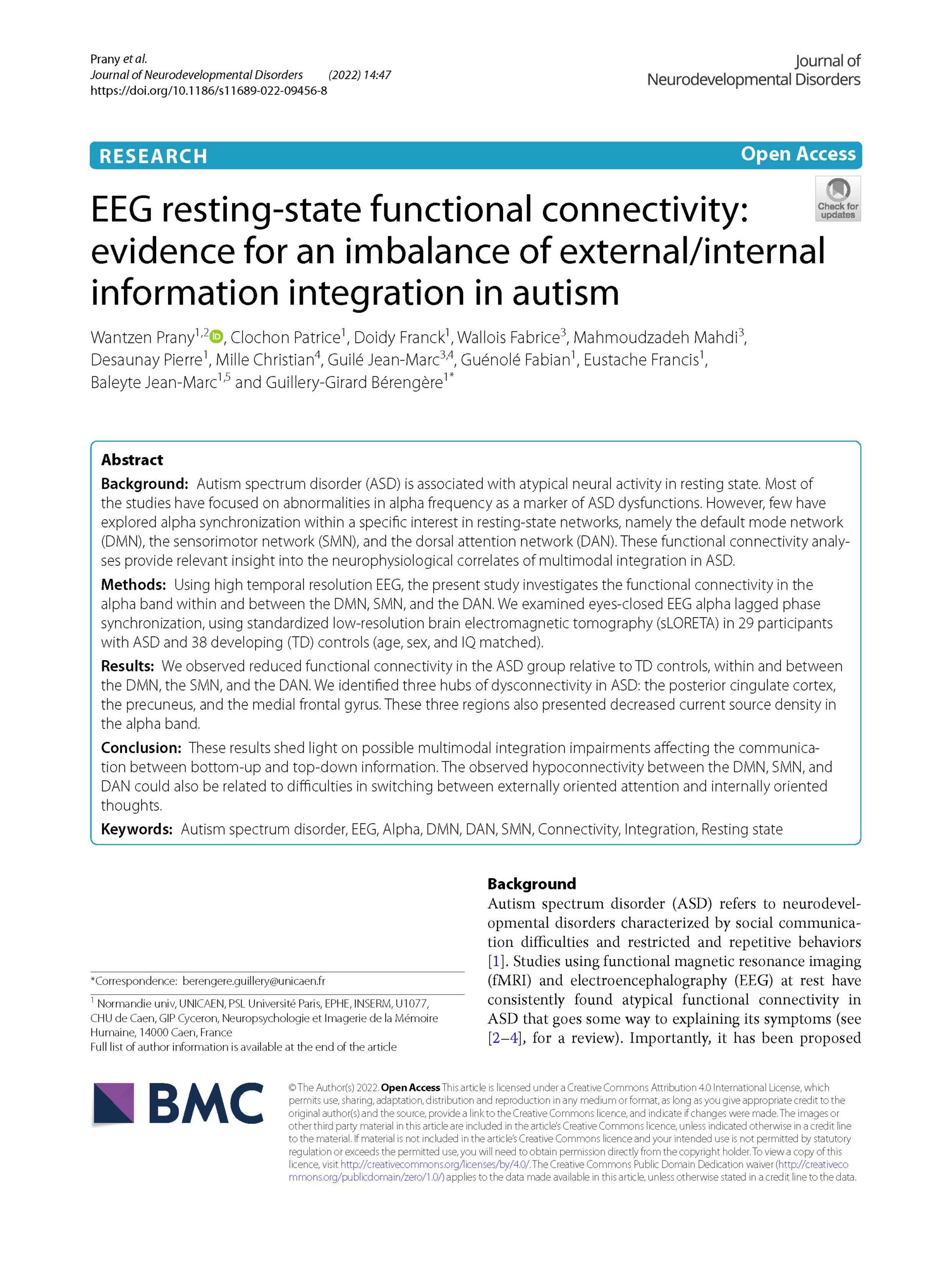Background: Autism spectrum disorder (ASD) is associated with atypical neural activity in resting state. Most of the studies have focused on abnormalities in alpha frequency as a marker of ASD dysfunctions. However, few have explored alpha synchronization within a specific interest in resting-state networks, namely the default mode network (DMN), the sensorimotor network (SMN), and the dorsal attention network (DAN). These functional connectivity analyses provide relevant insight into the neurophysiological correlates of multimodal integration in ASD.
Methods: Using high temporal resolution EEG, the present study investigates the functional connectivity in the alpha band within and between the DMN, SMN, and the DAN. We examined eyes-closed EEG alpha lagged phase synchronization, using standardized low-resolution brain electromagnetic tomography (sLORETA) in 29 participants with ASD and 38 developing (TD) controls (age, sex, and IQ matched).
Results: We observed reduced functional connectivity in the ASD group relative to TD controls, within and between the DMN, the SMN, and the DAN. We identified three hubs of dysconnectivity in ASD: the posterior cingulate cortex, the precuneus, and the medial frontal gyrus. These three regions also presented decreased current source density in the alpha band.
Conclusion: These results shed light on possible multimodal integration impairments affecting the communication between bottom-up and top-down information. The observed hypoconnectivity between the DMN, SMN, and DAN could also be related to difficulties in switching between externally oriented attention and internally oriented thoughts.
EEG resting-state functional connectivity: Evidence for an imbalance of external/internal information integration in autism
